
 |
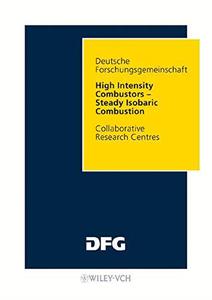 High Intensity Combustors - Steady Isobaric Combustion By 2002 | 471 Pages | ISBN: 3527277315 | PDF | 18 MB The present book offers specific knowledge on high intensity combustors and provides those who are interested in the area of fuel preparation and combustion, flow and heat transfer, and particularly in high temperature materials with a deep understanding of the fundamental physics. The topics covered by this report are characterized by the following major areas: fuel preparation, flow and combustion, pollutant formation, heat transfer and radiation, high temperature materials, thermal barrier coating systems. The book is written for scientists, engineers as well as technicians working on modern combustion systems. Content: Chapter 1.1 Atomization and Spray Propagation in Gas Turbine Combustors (pages 6-24): Georg Maier, Robert Meier, Michael Willmann, Reinhold Kneer, Johann Himmelsbach, Hans?Jorg Bauer and Sigmar WittigChapter 1.2 Calculation of Two Phase Flows in Combustors (pages 25-53): Roland Schmehl, Goran Klose, Georg Maier and Sigmar WittigChapter 1.3 Investigations of Droplet Evaporation at Elevated Pressures (pages 54-72): Klaus Prommersberger, Jorg Stengele, Klaus Dullenkopf, Johann Himmelsbach and Sigmar WittigChapter 1.4 Shear?Driven Liquid Wall Films in Combustor Flows: Recent Advances in Experiment and Numerical Simulation (pages 73-91): Heiko Rosskamp, Alfred Elsa?er, Joachim Ebner, Georg Maier, Berthold Noll and Soksik KimChapter 1.5 Pressure?Swirl and Twin?Fluid Atomization with Regard to Industrial Liquid Fuel Combustion (pages 92-108): Andreas Kufferath, Martin Loffler?Mang, Andreas Horvay and Wolfgang LeuckelChapter 2.1 Stabilisation of Turbulent Concentric and Swirling Flames Based on Flow and Mixing Pattern Investigations (pages 114-134): Peter Schmittel, Bernd Prade, Stefan Hoffmann and Bernhard LenzeChapter 2.2 Velocity?Fields, Reynolds Stresses, and Swirl?Induced Intermittency in Free and Enclosed Rotating Flows (pages 135-155): Frank Holzapfel, Klaus Dobbeling and Bernhard LenzeChapter 2.3 Mathematical Modeling of Turbulent Swirling Flames (pages 156-175): Peter Habisreuther, Matthias Philipp, Heinrich Eickhoff and Wolfgang LeuckelChapter 2.4 Stability and Burnout of Swirling Flames with Wastewater Injection (pages 176-191): Karsten Ehrhardt and Wolfgang LeuckelChapter 3.1 Formation and Reduction of Thermal and Fuel Nitrogen Oxides in Flames (pages 199-220): Dieter Stapf, Peter Jansohn, Stefan Koger and Wolfgang LeuckelChapter 3.2 Soot Formation from Gaseous Hydrocarbons in Turbulent Combustion (pages 221-254): Wolfgang Leuckel, Michael Huth and Bernd BartenbachChapter 4.1 High Efficient Cooling Concepts for Low Emission Combustors (pages 261-281): Moritz Martiny, Ralf Schiele, Michael Gritsch, Achmed Schulz and Soksik KimChapter 4.2 Numerical Modelling of Combustor Liner Heat Transfer (pages 282-298): Dietmar Giebert, Elias Papanicolaou, Carl?Henning Rexroth, Michael Scheuerlen, Achmed Schulz and Rainer KochChapter 4.3 Experimental Investigation and Numerical Prediction of Radiative Heat Transfer (pages 299-325): Rainer Koch, Benedikt Ganz, Werner Krebs, Berthold Noll and Sigmar WittigChapter 5.1 Systematic Investigation of the High?Temperature Deformation Behaviour of Selected Materials for Combustion Chambers in Different Component Conditions (pages 333-341): Uli T. Schmidt, Otmar Vohringer, Detlef Lohe and Eckard MacherauchChapter 5.2 Fatigue Behaviour of NiCr22Co12Mo9 under Isothermal and Thermal?Mechanical Fatigue Loadings (pages 342-358): Mourad Moalla, Karl?Heinz Lang and Detlef LoheChapter 5.3 Microstructure and Deformation Behaviour of Carbide?Hardened Superalloys (pages 359-374): Ulrich Martin, Heinrich Oettel, Uwe Muhle and Otmar VohringerChapter 5.4 Advances in the Inelastic Failure Analysis of Combustor Structures (pages 375-390): Holger Kiewel, Jarir Aktaa and Dietrich MunzChapter 5.5 Modeling of the Non?Linear Deformation and Damage Behaviour of Combustor Structure Materials (pages 391-416): Jarir Aktaa and Dietrich MunzChapter 6.1 Long?Term Behaviour and Application Limits of Plasma?Sprayed ZrO2 Thermal Barrier Coatings (pages 422-437): Petra A. Langjahr, Rainer Oberacker and Michael J. HoffmannChapter 6.2 The Creep Damage Behaviour of a Plasma?Sprayed Thermal Barrier Coating System for Combustion Chambers (pages 438-450): Uli T. Schmidt, Otmar Vohringer, Detlef Lohe and Eckard MacherauchChapter 7.1 Research Projects (pages 451-463): 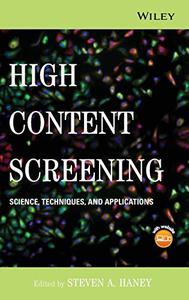 High Content Screening: Science, Techniques and Applications By 2008 | 428 Pages | ISBN: 047003999X | PDF | 50 MB The authoritative reference on HCS in biological and pharmaceutical research High Content Screening (HCS) has been a leading methodology in toxicology studies for years. Recent advances have broadened the range of applications to encompass new areas. High Content Screening: Science, Techniques, and Applications provides comprehensive coverage of HCS in four sections: * The basics of HCS, from the definition to detailed discussions of component technologies * Examples of HCS used in biological applications and early drug discovery, with an emphasis on applications in oncology and neuroscience * The use of HCS across the drug development pipeline * Data management, data analysis, and systems biology, with guidelines for using the large datasets generated by HCS in systems-level studies With chapters contributed by leading authorities from academia and industry, this guide covers: * A wide range of topics, including assay development, cell culture, image processing, robotics, database architecture and management, model systems for analysis, and more * Focused discussions on imaging in 3D, imaging of tissues for pharmacodynamic studies, and screening of both small molecule and RNAi libraries by HCS * The roles of bench researchers and IT personnel in implementing and maintaining HCS platforms * The challenges and advantages of using HCS today, and a look at future directions With eighty-seven detailed figures readers can refer to in full color on the accompanying CD-ROM, this is the premier, hands-on reference on HCS for researchers in academia, biotechnology, and pharmaceutical companies. It's also an excellent resource for lab managers and graduate students in biochemistry, cell biology, toxicology, and related fields.Content: Chapter 1 Approaching High Content Screening and Analysis: Practical Advice for Users (pages 1-24): Scott Keefer and Joseph ZockChapter 2 Automated High Content Screening Microscopy (pages 25-42): Paul A. JohnstonChapter 3 A Primer on Image Informatics of High Content Screening (pages 43-84): Xiaobo Zhou and Stephen T. C. WongChapter 4 Developing Robust High Content Assays (pages 85-109): Arijit Chakravarty, Douglas Bowman, Jeffrey A. Ecsedy, Claudia Rabino, John Donovan, Natalie D'Amore, Ole Petter Veiby, Mark Rolfe and Sudeshna DasChapter 5 HCS in Cellular Oncology and Tumor Biology (pages 111-143): Steven A. Haney, Jing Zhang, Jing Pan and Peter LaPanChapter 6 Exploring the Full Power of Combining High Throughput RNAi with High Content Readouts: From Target Discovery Screens to Drug Modifier Studies (pages 145-168): Christoph Sachse, Cornelia Weiss?Haljiti, Christian Holz, Kathrin Regener, Francoise Halley, Michael Hannus, Corina Frenzel, Sindy Kluge, Mark Hewitson, Benjamin Bader, Amy Burd, Louise Perkins, Alexander Szewczak, Stefan Prechtl, Claudia Merz, Peter Rae, Dominik Mumberg and Christophe J. EcheverriChapter 7 Leveraging HCS in Neuroscience Drug Discovery (pages 169-187): Myles Fennell, Beal McIlvain, Wendy Stewart and John DunlopChapter 8 Live Brain Slice Imaging for Ultra High Content Screening: Automated Fluorescent Microscopy to Study Neurodegenerative Diseases (pages 189-204): O. Joseph Trask, C. Todd DeMarco, Denise Dunn, Thomas G. Gainer, Joshua Eudailey, Linda Kaltenbach and Donald C. LoChapter 9 High Content Analysis of Human Embryonic Stem Cell Growth and Differentiation (pages 205-224): Paul J. Sammak, Vivek Abraham, Richik Ghosh, Jeff Haskins, Esther Jane, Patti Petrosko, Teresa M. Erb, Tia N. Kinney, Christopher Jefferys, Mukund Desai and Rami MangoubiChapter 10 HCS for HTS (pages 225-247): Ann F. Hoffman and Ralph J. GarippaChapter 11 The Roles of High Content Cellular Imaging in Lead Optimization (pages 249-268): Jonathan A. Lee, Karen Cox, Aidas Kriauciunas and Shaoyou ChuChapter 12 Using High Content Analysis for Pharmacodynamic Assays in Tissue (pages 269-291): Arijit Chakravarty, Douglas Bowman, Kristine Burke, Bradley Stringer, Barbara Hibner and Katherine GalvinChapter 13 High Content Analysis of Sublethal Cytotoxicity in Human HepG2 Hepatocytes for Assessing Potential and Mechanism for Chemical? and Drug?Induced Human Toxicity (pages 293-316): Peter J. O'BrienChapter 14 Open File Formats for High Content Analysis (pages 317-328): Jason R. Swedlow, Curtis Rueden, Jean?Marie Burel, Melissa Linkert, Brian Loranger, Chris Allan and Kevin W. EliceiriChapter 15 Analysis of Multiparametric HCS Data (pages 329-354): Andrew A. Hill, Peter LaPan, Yizheng Li and Steven A. HaneyChapter 16 Quantitative and Qualitative Cellular Genomics: High Content Analysis as an End Point for HT?RNAi Phenotype Profiling Using GE's IN Cell Platform (pages 355-369): David O. Azorsa, Christian Beaudry, Kandavel Shanmugam and Spyro MoussesChapter 17 Optimal Characteristics of Protein-Protein Interaction Biosensors for Cellular Systems Biology Profiling (pages 371-387): Kenneth A. Giuliano, Daniel R. Premkumar and D. Lansing Taylor  Alexander Laban Hinton, Thomas La Pointe, Douglas Irvin-Erickson, "Hidden Genocides: Power, Knowledge, Memory" English | 2013 | pages: 230 | ISBN: 0813561639, 0813561620 | PDF | 0,9 mb Why are some genocides prominently remembered while others are ignored, hidden, or denied? Consider the Turkish campaign denying the Armenian genocide, followed by the Armenian movement to recognize the violence. Similar movements are building to acknowledge other genocides that have long remained out of sight in the media, such as those against the Circassians, Greeks, Assyrians, the indigenous peoples in the Americas and Australia, and the violence that was the precursor to and the aftermath of the Holocaust. 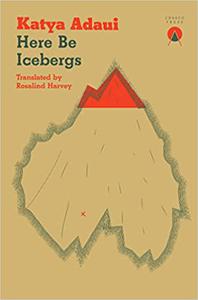 Katya Adaui, Rosalind Harvey, "Here Be Icebergs" English | 2022 | ISBN: 1913867196 | 130 pages | AZW3 | 0.4 MB The mysteries of kinship (families born into and families made) take disconcerting and familiar shapes in these refreshingly frank short stories. A family is haunted by a beast that splatters fruit against its walls every night, another undergoes a near-collision with a bus on the way home from the beach. Mothers are cold, fathers are absent―we know these moments in the abstract, but Adaui makes each as uncanny as our own lives: close but not yet understood. 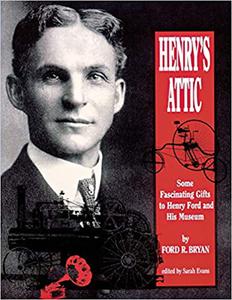 Ford R Bryan, "Henry's Attic: Some Fascinating Gifts to Henry Ford and His Museum" English | 1995 | pages: 434 | ISBN: 0814326420 | PDF | 120,5 mb Henry's Attic provides fascinating documentation of some of the one million artifacts in the Henry Ford Museum and Greenfield Village. The items represent both Henry Ford's passion for collecting Americana and the astonishing array of gifts-some of great historic value and others of a distinctly homegrown variety-that account for almost half of the museum's collections. It was the quantity of these gifts and the unusual and even unique nature of many of them that provided the inspiration for this book.  Harlow Giles Unger, "Henry Clay: America's Greatest Statesman" English | 2015 | pages: 337 | ISBN: 0306823918, 0306825163 | PDF | 4,9 mb In a critical and little-known chapter of early American history, author Harlow Giles Unger tells how a fearless young Kentucky lawyer threw open the doors of Congress during the nation's formative years and prevented dissolution of the infant American republic.  Daniel M. Gross, Ansgar Kemmann, "Heidegger And Rhetoric" English | 2006 | pages: 202 | ISBN: 0791465527, 0791465519 | PDF | 0,7 mb Leading scholars address Heidegger's 1924 lecture course, "Basic Concepts of Aristotelian Philosophy." 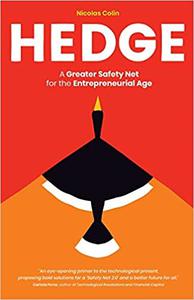 Hedge: A Greater Safety Net for the Entrepreneurial Age by Nicolas Colin English | 2018 | ISBN: 1718917082 | 338 Pages | PDF | 5.9 MB For three decades we've been living through a paradigm shift. Our world is moving from the fading Fordist age to the ever-strengthening digital age. This shift is as unstoppable as the one that once brought us from railroads and steel mills to Fordist factories. And its impact on our lives is just as radical.
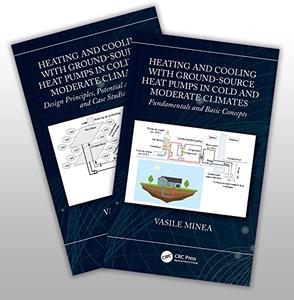 Heating and Cooling with Ground-Source Heat Pumps in Moderate and Cold Climates, Two-Volume Set English | 2022 | ISBN: 0367405458 | 841 Pages | PDF (True) | 38 MB Heating and Cooling with Ground-Source Heat Pumps in Moderate and Cold Climates, Two-Volume Set focuses on the use of very low-temperature geothermal energy for heating and cooling residential, institutional, and industrial buildings, and aims to increase the design community's awareness and knowledge of the benefits, design, and installation requirements of commercial/institutional building ground-source heat pumps (GSHP). This set helps readers assess applicability, select a GSHP system type, and estimate building thermal load to ensure proper size for ground-source subsystems, appropriate brine and groundwater flow rates, and apt design of building closed-loops with distributed or central geothermal heat pumps.  Dimitris Dogramatzis, "Healthcare Biotechnology: A Practical Guide" English | 2011 | pages: 664 | ISBN: 0367452278 | PDF | 4,8 mb Foreseeing and planning for all of the possibilities and pitfalls involved in bringing a biotechnology innovation from inception to widespread therapeutic use takes strong managerial skills and a solid grounding in biopharmaceutical research and development procedures. Unfortunately there has been a dearth of resources for this aspect of the field. Until now. |